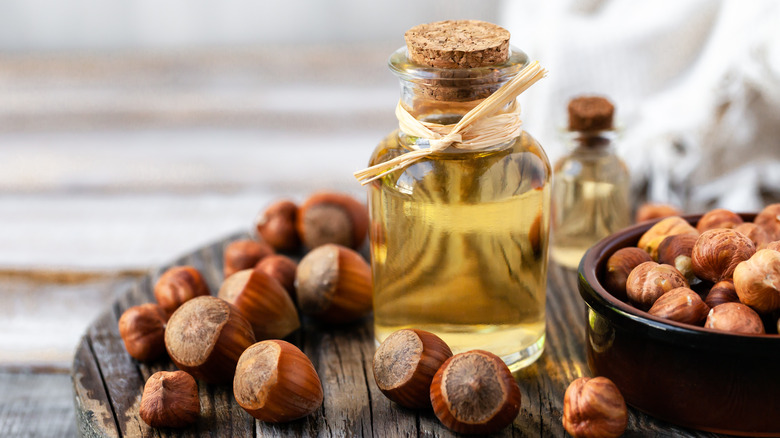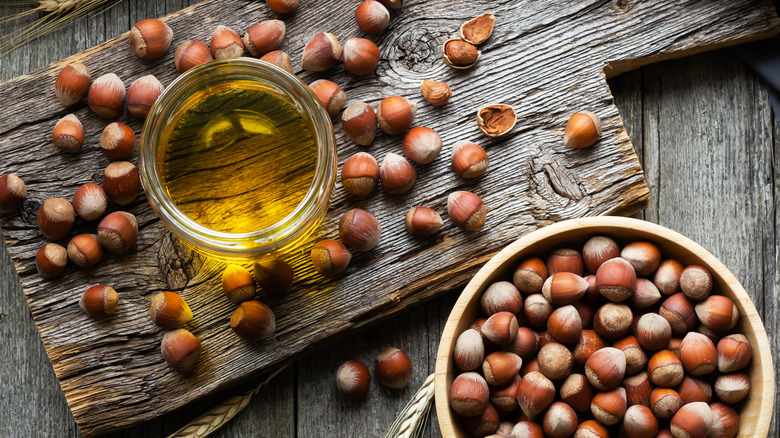The Big Reason You Should Be Cautious When Using Hazelnut Oil
Chocolatey spreads, coffee flavors, decadent candies — hazelnuts have widespread influence thanks to the rich aroma, texture, and flavor they lend to anything they're added to. Their unique, sweet, and nutty flavor can add depth and complexity to a wide range of dishes, from salads and pastries to sauces and dressings. With their delightful crunch, hazelnuts can provide a satisfying texture to many recipes. Also known as filberts, hazelnuts are a worthy ingredient to use in your cooking, but it's hazelnut oil that is worth exploring. However, proceed with a little caution.
Hazelnut oil can be the secret to adding depth to a bake or dish when used correctly. While the flavor of hazelnut is a treasured one, hazelnut oil possesses a strong and distinct taste that can easily overpower other ingredients in your dish, especially if used in large quantities or heated. It's best to have a light hand when using hazelnut oil or blend it with other oils to balance its flavor.
Qualities of hazelnut oil
The process of creating hazelnut oil begins with roasting the hazelnuts to bring out their natural flavor and aroma. Roasting the hazelnuts enhances their flavor and helps to loosen the skin, making it easier to remove during the oil extraction process. After roasting, the hazelnuts are crushed or ground into a fine paste, then pressed to extract the oil. The resulting oil is then filtered to remove any impurities, ensuring that only pure hazelnut oil remains.
In comparison to other oils, hazelnut oil maintains a high smoke point of 430 degrees Fahrenheit. In theory, this means it's suitable for use in high-temperature cooking, however, it's not the best choice for that application. That's because the flavor is powerful, so using it as a frying or roasting oil could overwhelm your dish with a deep hazelnut flavor. What's more, hazelnut oil leans on the expensive side, so take the tips below into consideration the next time you're planning to integrate it into your next dish.
Best ways to use hazelnut oil
In the same spirit of highly aromatic and powerful oils like truffle or sesame seed, a little bit of hazelnut oil goes a long way. One of the best ways to use hazelnut oil is as a finishing oil. In French cuisine, hazelnut oil is often drizzled over dishes just before serving to add a final touch of flavor and aroma. This way, the oil's powerful flavor is not diluted by cooking and can enhance the taste of the dish without overpowering it.
Another way to use hazelnut oil is to blend it with other oils. Mix it with olive oil or grapeseed oil to create a flavorful and balanced salad dressing. The combination of different oils helps to mellow out the strong hazelnut flavor and creates a more subtle and nuanced taste.
All it takes to make the most out of luxurious hazelnut oil is understanding its potency and the best ways to control it. Get inspired by this roasted duck breast with hazelnut and fregola risotto for a decadent meal delicately flavored with hazelnut oil.


